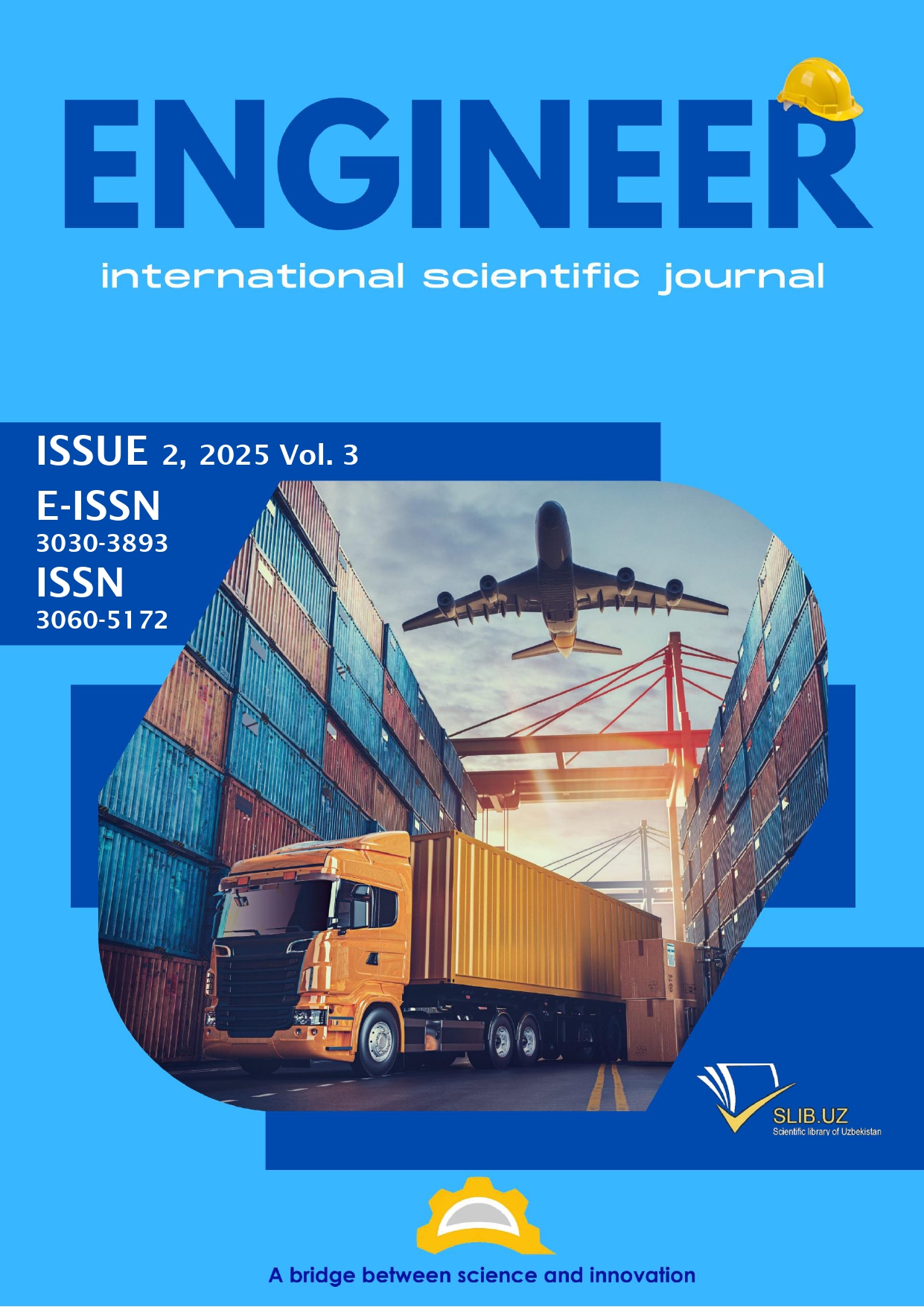Analysis of the impact of speed and lane distribution on pollutant concentrations in the urban street environment
Аннотация
This article presents the results of an in-depth analysis of the relationship between lane-specific traffic characteristics—namely, lane position and average vehicle speed—and the concentration levels of major air pollutants (CO, NO, NO₂, SO₂) in an urban environment. Field measurements were conducted in spring 2025 on straight, well-maintained segments of urban streets in Tashkent with different lane configurations (4, 6, and 8 lanes), under favorable meteorological conditions. The study examined how the position of traffic lanes (from right-most to left-most) and their corresponding average speeds affect pollutant levels. The data revealed a consistent trend: pollutant concentrations are highest on the first (right-most) lane, where average speeds are lowest, and gradually decrease toward the center and left-most lanes, where speeds are higher and traffic flow is more stable. This pattern was particularly evident for NO and NO₂, with frequent exceedances of the maximum permissible concentrations, while CO and SO₂ remained within acceptable limits in most cases. The findings underscore the role of stop-and-go traffic, common in right-hand lanes (due to loading, unloading, and public transport), in intensifying localized air pollution. These results highlight the importance of integrating lane-specific traffic flow characteristics into urban planning and traffic management policies. Recommendations include reducing heavy vehicle traffic in right-hand lanes during daytime hours and enhancing traffic flow efficiency to mitigate pollutant buildup in high-exposure zones. This study provides a practical foundation for improving air quality through street design and targeted transport regulations.
Литература
[2] Zhang, S., Wu, Y., Huang, R., Wang, J., Yan, H., Zheng, Y., & Hao, J. (2016). High-resolution simulation of link-level vehicle emissions and concentrations for air pollutants in a traffic-populated eastern Asian city. Atmospheric Chemistry and Physics, 16(15), 9965-9981.
[3] Zhang, Y., Ye, X., Wang, S., He, X., Dong, L., Zhang, N., ... & Xiao, Y. (2021). Large-eddy simulation of traffic-related air pollution at a very high resolution in a mega-city: evaluation against mobile sensors and insights for influencing factors. Atmospheric Chemistry and Physics, 21(4), 2917-2929.
[4] Azizov K.H. Fundamentals of Traffic Safety Organization: Textbook for Universities. – Tashkent: Fan va Texnologiya, 2012. – 272 p. ISBN 978–9943–10–775–5.
[5] Coria, J., Bonilla, J., Grundström, M., & Pleijel, H. (2015). Air pollution dynamics and the need for temporally differentiated road pricing. Transportation Research Part A: Policy and Practice, 75, 178-195.
[6] Gasperi, J., Le Roux, J., Deshayes, S., Ayrault, S., Bordier, L., Boudahmane, L., ... & Gromaire, M. C. (2022). Micropollutants in urban runoff from traffic areas: target and non-target screening on four contrasted sites. Water, 14(3), 394.





